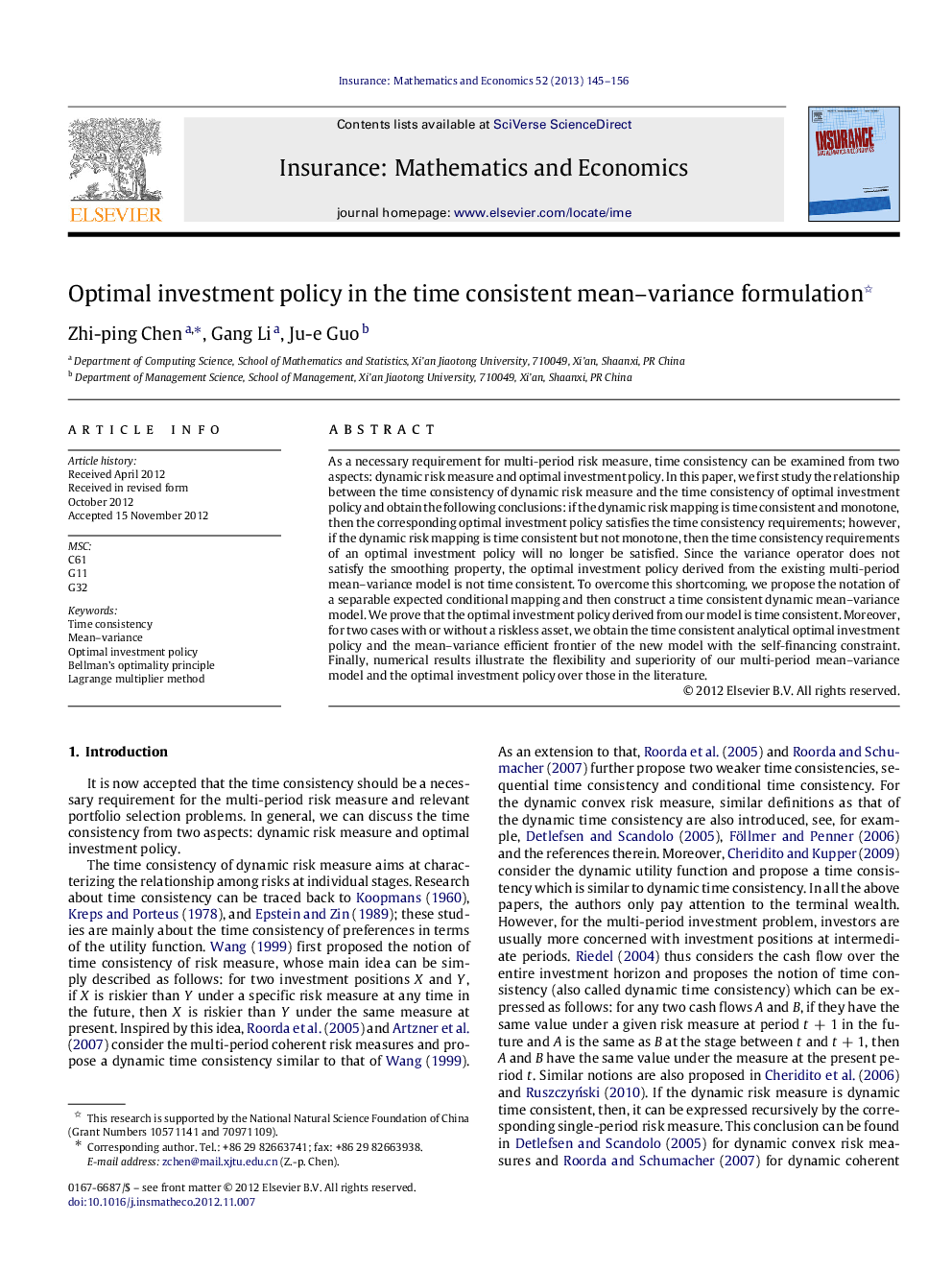| Article ID | Journal | Published Year | Pages | File Type |
|---|---|---|---|---|
| 5076880 | Insurance: Mathematics and Economics | 2013 | 12 Pages |
Abstract
As a necessary requirement for multi-period risk measure, time consistency can be examined from two aspects: dynamic risk measure and optimal investment policy. In this paper, we first study the relationship between the time consistency of dynamic risk measure and the time consistency of optimal investment policy and obtain the following conclusions: if the dynamic risk mapping is time consistent and monotone, then the corresponding optimal investment policy satisfies the time consistency requirements; however, if the dynamic risk mapping is time consistent but not monotone, then the time consistency requirements of an optimal investment policy will no longer be satisfied. Since the variance operator does not satisfy the smoothing property, the optimal investment policy derived from the existing multi-period mean–variance model is not time consistent. To overcome this shortcoming, we propose the notation of a separable expected conditional mapping and then construct a time consistent dynamic mean–variance model. We prove that the optimal investment policy derived from our model is time consistent. Moreover, for two cases with or without a riskless asset, we obtain the time consistent analytical optimal investment policy and the mean–variance efficient frontier of the new model with the self-financing constraint. Finally, numerical results illustrate the flexibility and superiority of our multi-period mean–variance model and the optimal investment policy over those in the literature.
Related Topics
Physical Sciences and Engineering
Mathematics
Statistics and Probability
